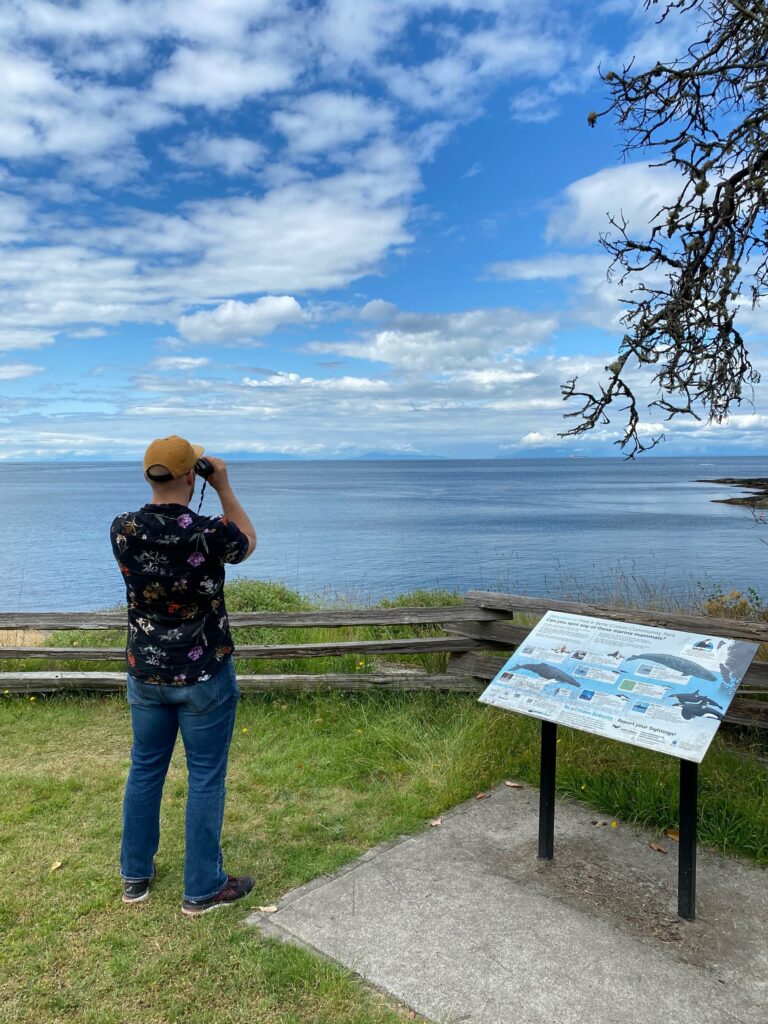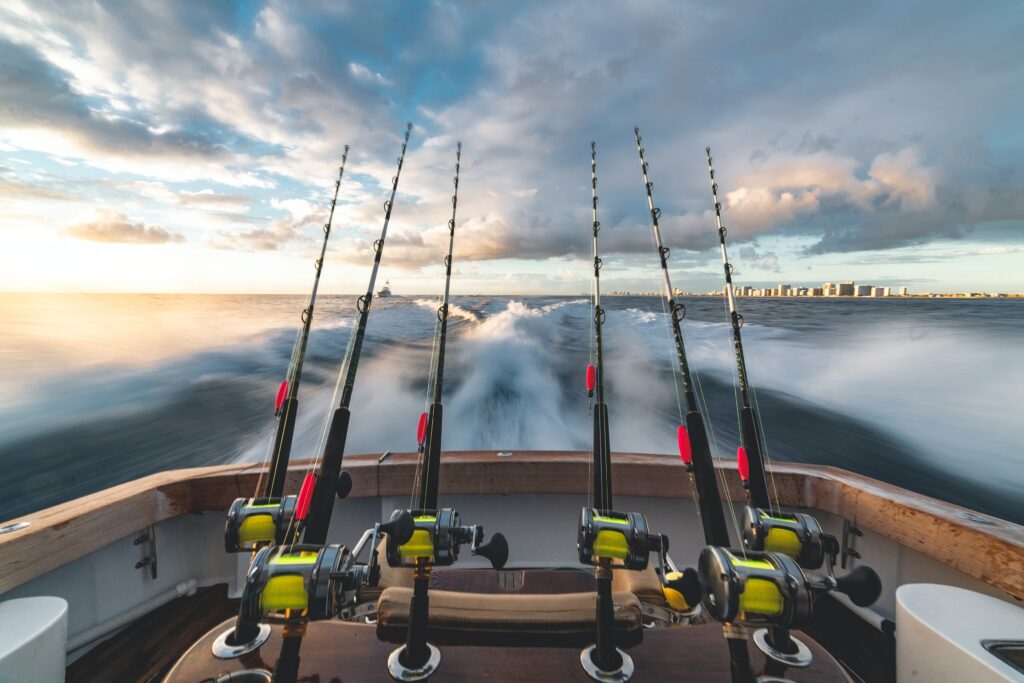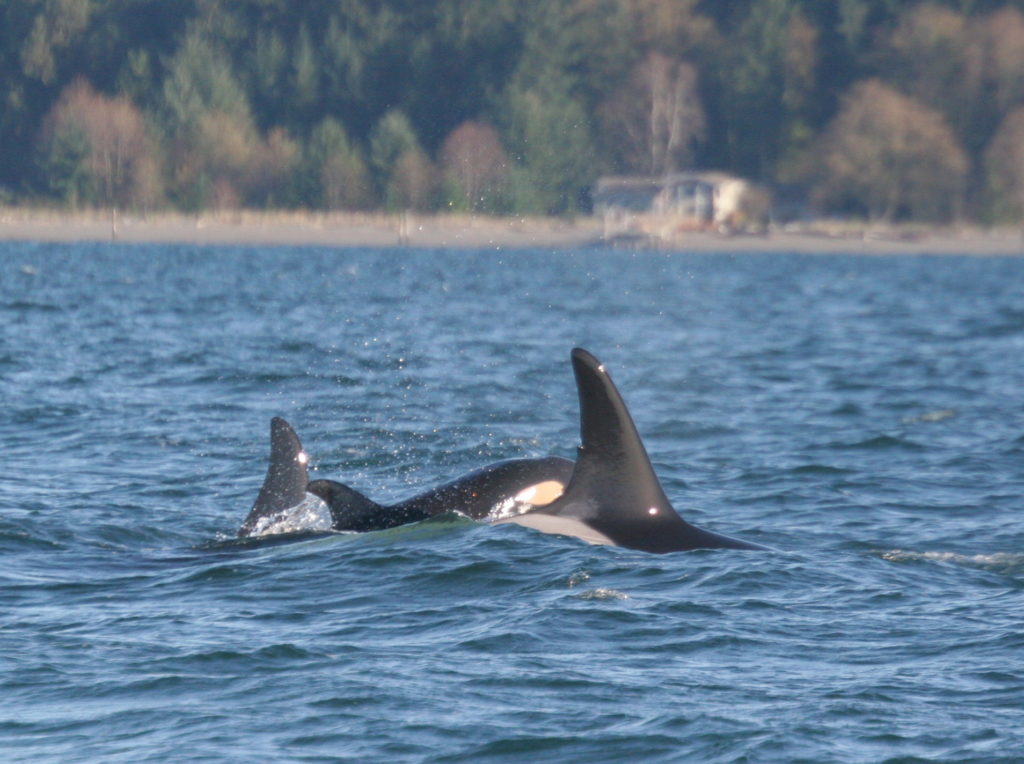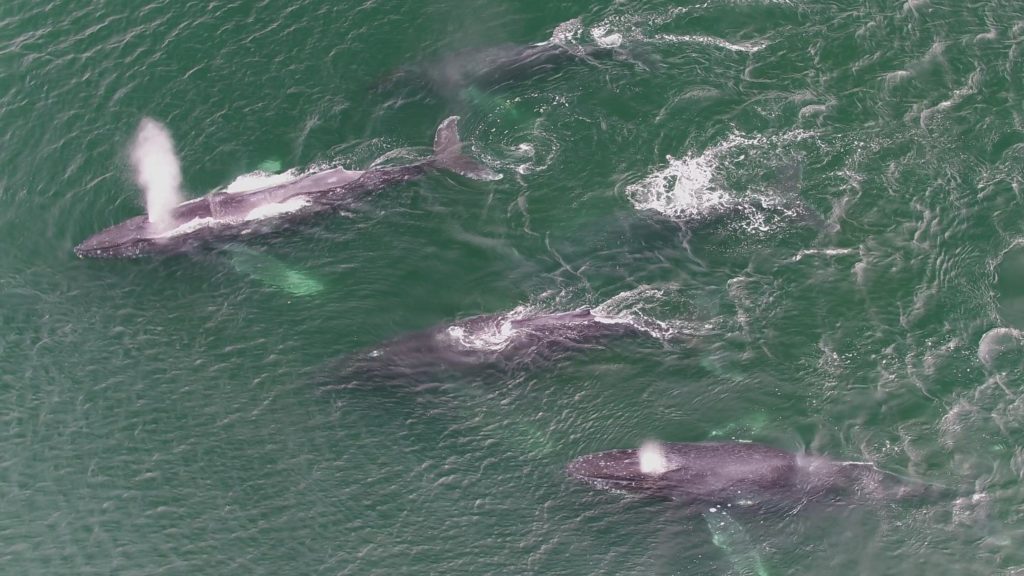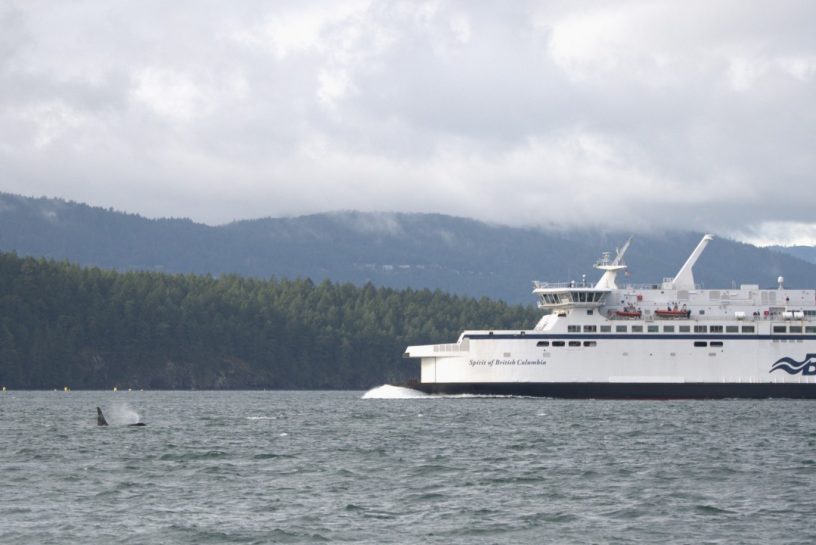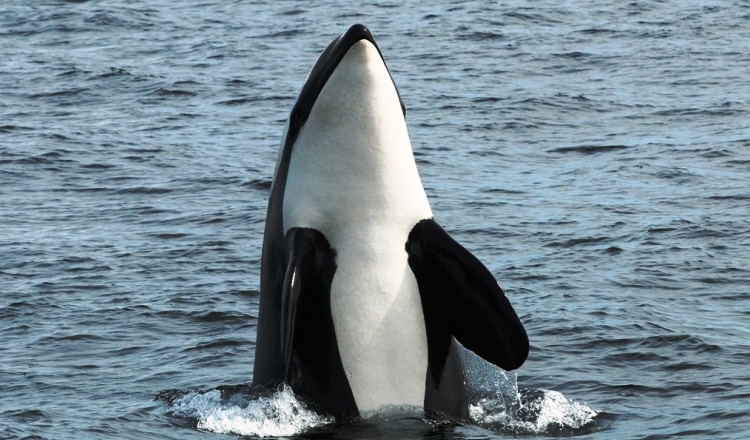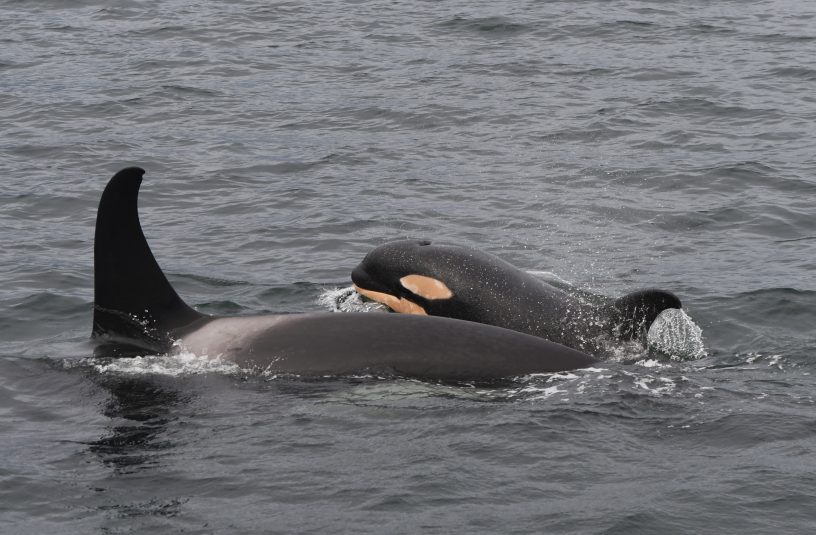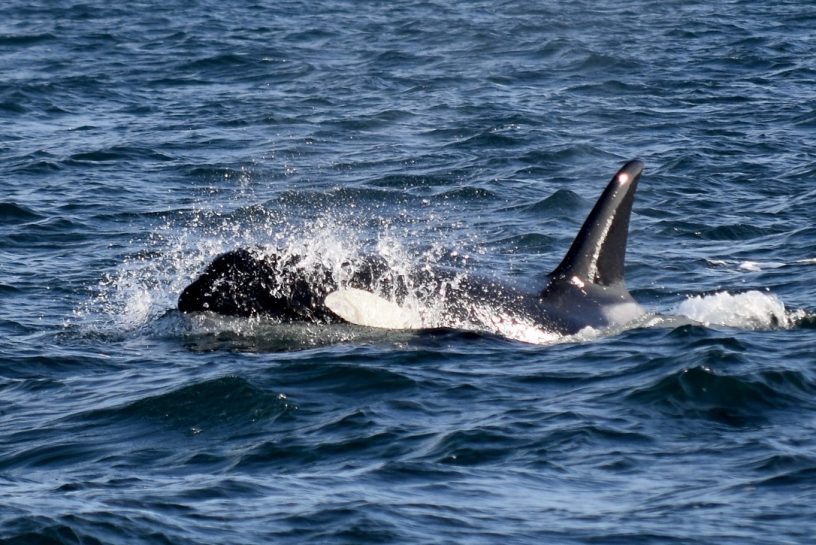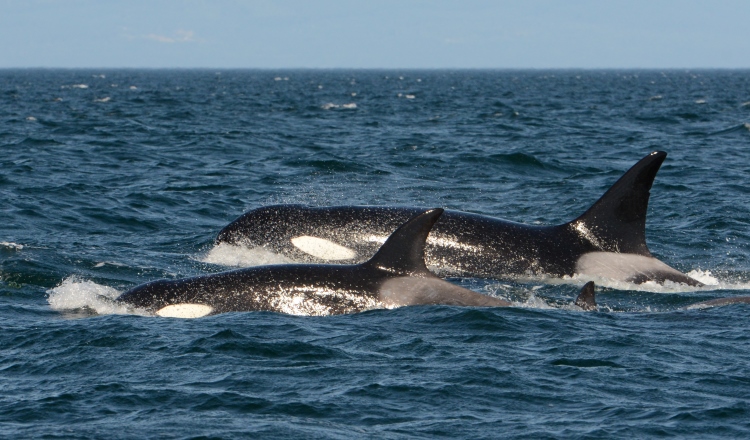
Killer Whale Sam Spotted Alive and Well with His Family
Last week, a group of Bigg’s (transient) killer whales swam into Departure Bay off Nanaimo on Vancouver Island. Researchers from Fisheries and Oceans Canada’s (DFO) Cetacean Research Program took to the water to take photographs to identify each of the whales. It wasn’t the presence of Bigg’s killer whales in Departure Bay that got researchers so excited; rather, it was who was among them: a young killer whale named Sam (T46C2), along with his or her mother and other family members.
Why were we so happy to have a sighting of Sam? In the summer of 2013, DFO researchers Graeme Ellis and Dr. John Ford discovered a lone killer whale calf in a small cove off Weeteeam Bay, on the outer coast of remote Aristazabal Island. They were not able to identify the whale, but determined it was a Bigg’s whale from its characteristic calls. Graeme dubbed it Sam, after his old friend Sam Lamonte who had spent many summers beachcombing in the area decades earlier. Killer whales typically stay with their mothers until they mature — a calf by itself was highly unusual. Although they were concerned, John and Graeme had to leave the day after they spotted Sam. They passed the news to Vancouver Aquarium senior scientist Dr. Lance Barrett-Lennard in hopes that he could investigate further. Lance was doing a killer whale survey on the Aquarium’s cetacean research boat Skana about 50 miles away, and headed up to Weeteeam Bay with field assistant Albert Michaud right away.
Sam was still there when they arrived. The young whale was shy and difficult to approach, but after a couple of days of trying they were able to take good quality photos, which they sent via satellite phone to DFO researcher Jared Towers. After careful examination of the photos Jared identified the whale as T46C2, a juvenile of unknown sex born in 2009. Back in Weeteeam Bay, Sam — who didn’t appear to be eating — had become noticeably thinner and was calling loudly and incessantly. Lance and Albert attempted to draw the whale out of the bay by playing Bigg’s killer whale calls underwater outside the bay’s narrow entrance. Though excited by the calls, Sam appeared afraid of the opening and would not pass through it.
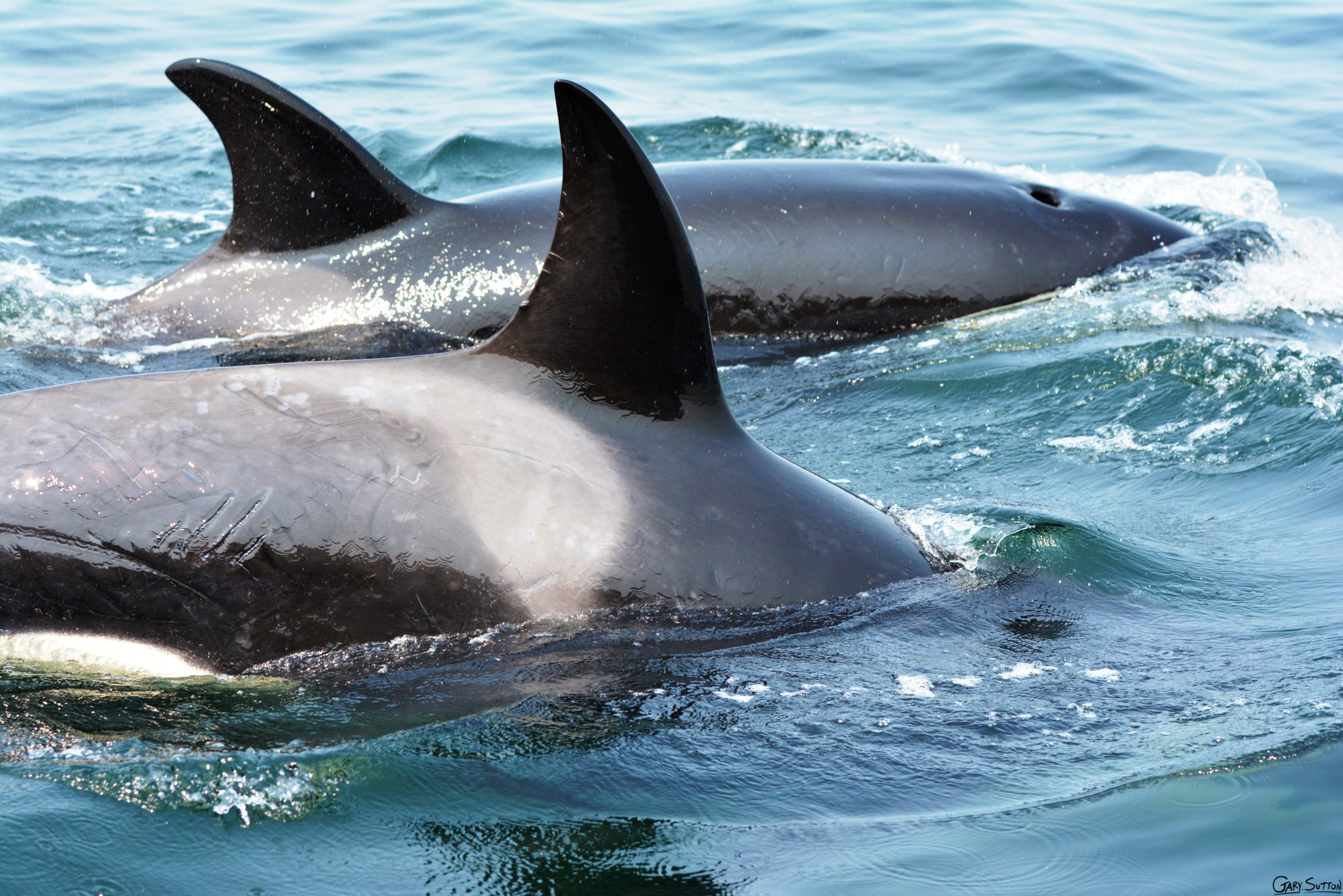
When Lance left to switch out his crew, the Coastal Guardian Watchmen in Klemtu kept a close eye on Weeteeam Bay. Lance returned a few days later with a new field assistant: his son Lee. They could see Sam’s condition was deteriorating. A depression was visible behind the blowhole, which is a sign the whale was getting dehydrated from not eating enough. Lance and Lee watched over Sam as a rescue plan came together.
On Aug. 14, 2013, two weeks since Sam was first seen alone, the plan took shape. After a brief run to Bella Bella for a second crew change, Lance returned with research biologist Meghan Moore, and Dr. John Ford arrived with a crew on board the Raincoast Conservation Society’s research vessel Achiever. The next morning, Achiever Captain Brian Falconer helped the two groups employ a two-pronged approach to coax Sam out of the Bay. Killer whales are notoriously reluctant to pass under unfamiliar floating objects, so the Achiever’s two inflatable boats dragged a long floating line crosswise between them down the bay, gently herding Sam towards the entrance. When Sam got there, the Skana, floating just outside the mouth, played Bigg’s killer whale calls through an underwater speaker. The operation worked flawlessly and on first try Sam shot through the entrance, porpoising once beside the Skana before heading out to sea.
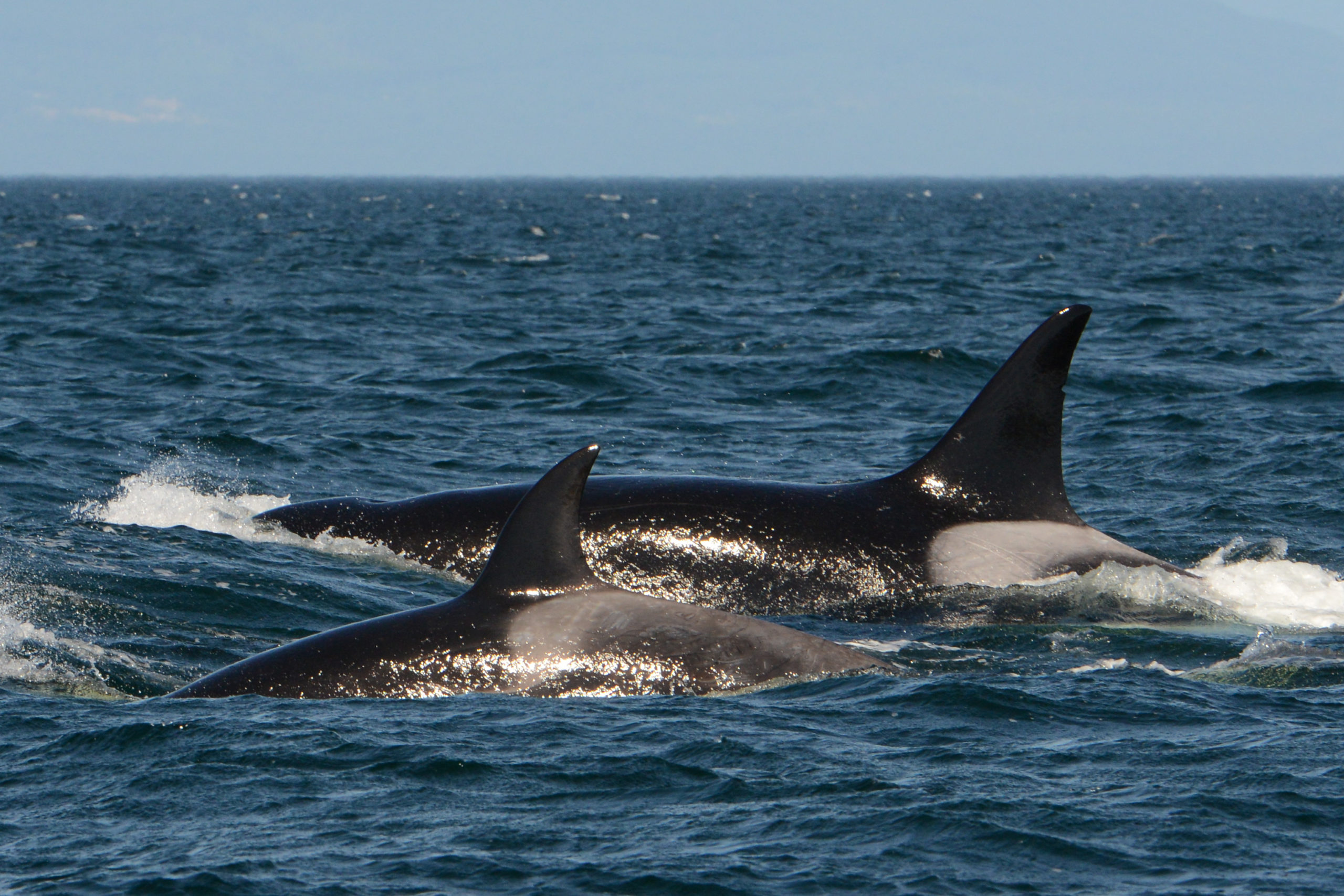
Thanks to the contribution of photos to DFO’s Cetacean Research Program, we know that Sam was seen several times over the next few months. Two weeks after the rescue Jared and Marine Education and Research Society researcher Christie McMillan saw Sam off NE Vancouver Island, more than 150 miles south of Weeteeam Bay. Although alone, the young whale appeared healthier and was swimming in an area where prey was abundant. Sam was photographed in this area twice more that fall, first by John Kitchin and subsequently by Yvonne Maximchuk. On the first occasion, the whale was swimming with its presumed aunt, T123, and her offspring; on the second, Sam was with an unrelated group of whales, the T55s. After that, Sam wasn’t seen again for 10 months.
In October 2014, researchers Rob Williams and Erin Ashe of Oceans Initiative responded to a report from OrcaLab of killer whales in Blackfish Sound, near Telegraph Cove. The whales consisted of Sam’s mother and family (the so-called T046C group) — and in among them was the distinct pointy dorsal fin and non-descript saddle patch of Sam!
Following this observation the T046Cs were not seen again until recently. On June 20, Sam, the T046Cs and an unrelated group of Bigg’s whales, the T125s, were photographed in Haro Strait by biologist Monika Wieland. Then, on July 2, Brianna Wright, James Pilkington, and Kirsty Medcalf from DFO were able to identify all the same whales in Departure Bay, off Nanaimo. These sightings indicate that Sam has successfully reintegrated with its family and that like other maternally-related groups of killer whales, the T046Cs are maintaining social cohesion over long periods of time.
Sam’s rescue and eventual family reunion marks a huge success and is being celebrated by everyone involved. After Sam’s rescue, the hope was that he or she would not only survive but would find and reunite with family members. That’s just what’s happened and it’s a fairy-tale ending to the story. Those involved with rescuing him and tracking sightings of Sam afterwards could not be more pleased. We look forward to many more reports of Sam and the T046Cs through the coming years.
If you see a killer whale or any other cetacean, you can contribute to conservation-oriented research by reporting your sighting to the B.C. Cetacean Sightings Network. Reports can be made via the toll-free phone line 1.866.I.SAW.ONE, e-mailing: [email protected] or by downloading our app: WhaleReport (free from the iTunes and Google Play stores). Photos of killer whales can be sent to the DFO killer whale photo-identification program at [email protected].
Blog post submitted by Dr. Lance Barrett-Lennard and Carla Crossman, Vancouver Aquarium Marine Science Centre and Jared Towers.
Posted July 13, 2015 by Vancouver Aquarium
